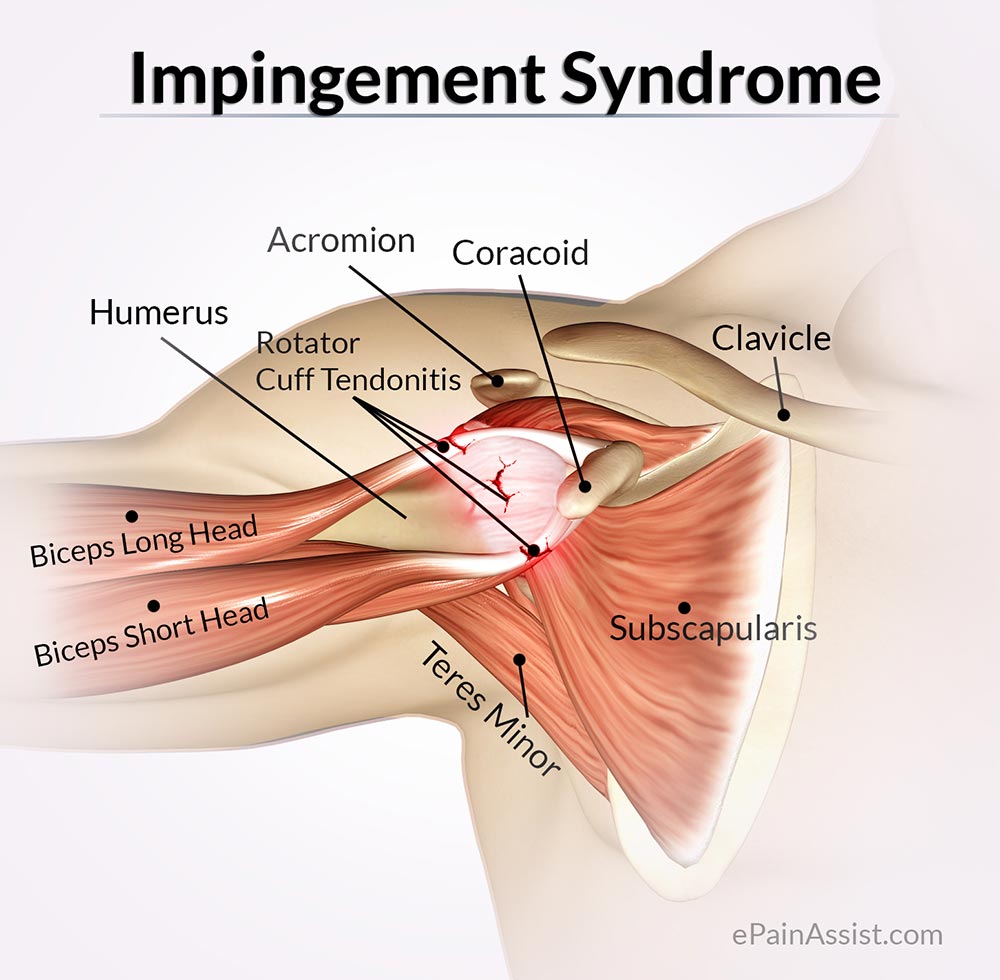Normal Anatomy and Movement
The shoulder girdle is made up of 3 bones, the scapula (shoulder blade), the clavicle (collar bone) and the humerus (arm bone). The shoulder is a ball and socket joint, with the ball-shaped head of the humerus sitting just underneath the arch of the scapula. The space between the head of the humerus and the arch of the scapula is called the subacromial space.
In uninjured shoulders, normal elevation of the arm consists of both upward movement of the humerus, as well as of the scapula. These movements are normally coordinated so that the subacromial space remains open and uncompressed.
Subacromial Impingement
One of the most common ailments of the shoulder is impingement of the subacromial space. This is when the space between the head of the humerus and the arch of the scapula is compressed. This causes compression of the tendons and other structures in this space, and causes pain particularly upon lifting the shoulder. This condition is extremely common amongst athletes that repetitively use their arm above their head. In the general population it may occur from muscle imbalance or repetitive or heavy use of the shoulder.
Signs and Symptoms
- Shoulder impingement may be associated with any number of the following symptoms:
- Pain around the front, top or side of the shoulder.
- Pain referring down the outside of the upper arm particularly with aggravating movements.
- Pain with sleeping on the affected shoulder
- Aggravated by repetitive movements of the shoulder (e.g. stirring a pot).
- Aggravated by using the affected arm above the head (e.g. hanging out the washing or throwing a ball).
- Decreased strength of the affected shoulder.
Your physiotherapist is often able to diagnose the nature of your shoulder injury with specific manual tests.
However sometimes an ultrasound scan may be requested to determine the exact location and extent of the disorder.
Physiotherapy Treatment
Physiotherapy is highly effective in treating shoulder impingement. Treatment is largely based on individual impairments as determined by your Physiotherapist. The following treatments are just some of the strategies that aim to correct the biomechanics and movement of the shoulder complex to decrease the load on the subacromial space and promote healing.
- Mobilisation
- Modalities
- Taping to correct shoulder girdle position
- Postural correction exercises
- Exercise program designed to improve the strength and control of the rotator cuff muscles and the muscles around the shoulder blade
ROTATOR CUFF TEARS
A common cause of subacromial impingement is damage to the rotator cuff. The rotator cuff is made up of four small muscles that control the position of the shoulder joint. Common risk factors for sustaining a rotator cuff tear include being over 40, having a job requiring a repetitive overhead motions, or heavy lifting. Depending on the severity of the tear to the rotator cuff, the condition may be treated conservatively with exercises and physiotherapy, or may be surgically repaired. Physiotherapy would focus on strengthening the rotator cuff muscles and the muscles attaching to the shoulder blade. Extensive Physiotherapy is required after surgical repair.
The YouTube video below runs through some exercises which can help improve shoulder biomechanics and avoid or alleviate the symptoms of Subacromial Impingement.


